1.01 Dallas Junglehawgs — RB William Green
Today: "Michael Pittman going crazy again"?!? What the hell did I mean by that? Pittman's history of domestic troubles went WAY further back than his 2003 SUV-ramming incident. He had a previous incident in 2001. According to Tempe, Arizona Police, Pittman broke a glass door to enter his wife's apartment after he looked in a window and saw her with another man. As for Green, despite a slow start, he finished 2002 strong and looked to be the Browns' RB for the foreseeable future. But 2003 was a lost season for him (marijuana, plus some domestic problems of his own) and he lost the Browns' starting RB job to Lee Suggs in 2004. Dallas coughed up the 5th and 12th overall picks to Tampa Bay to get Green, who is now a 3rd-string back with the Browns. He presently sits on the bench for the San Diego Slewage. The picks they traded were used on T.J. Duckett and Clinton Portis—more on them later.
1.02 Cincinnati Skye-Lites — RB DeShaun Foster
Today: He probably did both, but nobody could foresee his injury problems. A knee injury, which involved microfracture surgery, in 2002, followed by a freak collarbone fracture in 2004. He continues to demonstrate an inability to stay healthy in 2005.
1.03 Green Bay Ground Hogs — QB David Carr
Today: When I said "well-stocked at QB," I meant that they had the Seahawks' and Bears' QBs. In retrospect, Carr was a good decision, if only because the Bears' QB situation has been anything but solid. Carr hasn't been the fantasy stud one would expect, but much of that is because the men that are supposed to serve as his offensive line are no better than tampons (only good for one period, no second string).
1.04 Minnesota Fats — QB Joey Harrington
Today: Deuce McAllister was the player Minnesota traded to get this pick. Ken, you need not feel so alone; you may regret trading McAllister for this pick, but the year before, I passed up McAllister for Kevan Barlow in the 2001 TUFF Draft (I blame Ricky Williams). (Minnesota was able to deal Gannon later on.) They also were able to trade Harrington while his trade value was relatively high. Harrington is looking more and more like another lemon off Jeff Tedford's assembly line, and while part of it can be blamed on inconsistent offensive line play, there's no excusing his inaccurate passing and inability to get his team into the end zone once they've reached the red zone.
1.05 Tampa Bay Meat Goats — RB T.J. Duckett
Today: Duckett hasn't been a bad "consolation prize" at all—even if he hasn't become an every-down back.
1.06 Indianapolis Hoosier Daddies — WR Donte Stallworth
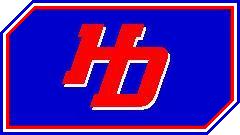
Today: I thought Indy was the luckiest team in the world to have Stallworth fall into their laps. (2004 hadn't happened yet.) In the meantime, Stallworth has been inconsistent and injury-prone.
1.07 Green Bay Ground Hogs — TE Jeremy Shockey
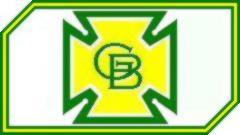
Today: I never would have expected Green Bay to take Shockey precisely because they already had (and still have) Tony Gonzalez. They later traded Shockey to Denver for RB Najeh Davenport and a 2003 first-rounder (which was used to select Lee Suggs).
1.08 Minnesota Fats — WR Ashley Lelie
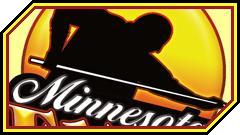
Today: Lelie has developed slowly but steadily, and is now starting alongside Smith. But in fantasy terms, he's more like a #3 receiver than a #1. Minnesota could still use a "home run threat."
1.09 Chicago Blaze — QB Patrick Ramsey
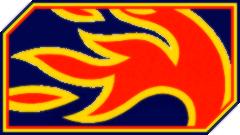
Today: Well, I called Ramsey "the next Terry Bradshaw" when I picked him. Had I bothered to read up on Bradshaw's career stats, I would have realized that Bradshaw never became a really good fantasy QB until he was well into his 30s and in the process of becoming the poster boy for male pattern baldness. As for the backfield? 2003 turned out to be a terrible year for running backs. I could have had Portis here and Carson Palmer in 2003, but I needed to replace Kordell Stewart, who I lost in the expansion draft in 2001, so I went with Ramsey and hoped that between the two draft picks I had in Round 1 in 2003, I'd get my running back. Didn't happen. In the meantime, inconsistent performance from Ramsey led me to snap up Ben Roethlisberger in 2004.
1.10 Carolina Convicts — WR Antonio Bryant
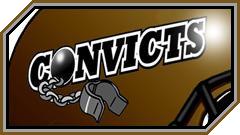
Today: Bryant has shown much more of his downside. After a fight with Bill Parcells during a preseason practice, Bryant found himself in Cleveland, where the passing game is nothing like it was in the days of Bernie Kosar. All in all, Bryant's production has been nothing like that of Moss or Terrell Owens.
1.11 Tennessee Taz Devils — RB Jonathan Wells
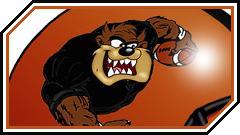
Today: Neither Wells nor James Allen, the Texans' other RB, proved to be a valuable contributor. To make things worse, Jordan wouldn't start for anyone in 2002, 2003 or 2004. Did I ever mention that I'm angry that the San Francisco 49ers didn't take Jordan over Kevan Barlow in the 2001 draft? (They could have taken Jordan in Round 2 instead of Barlow in Round 3.)
1.12 Tampa Bay Meat Goats — RB Clinton Portis
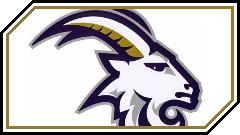
Today: I would have been thrilled to have Martin, Duckett and Portis in my backfield at the start of this season. And I was WAY OFF on my prediction about Portis. I thought for sure that Mike Anderson would have gotten the call if both Davis and Gary had gotten hurt, and I didn't even know about microfracture knee surgery (the surgery that effectively ended TD's career).
1.13 Cleveland Cosmos — WR Javon Walker
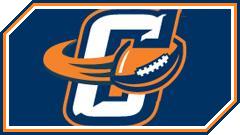
Today: You probably think I made this up. Actually, I was expecting Walker to contribute right away, due to the thinness of the WR corps the Packers had at the time. It took a few years for Walker to develop into a #1 wideout. Anyway, after seeing Walker, Anquan Boldin and (when healthy) Peter Warrick, you know that Florida State doesn't "just make up" good wide receivers.
1.14 Arizona Outlaws — WR Josh Reed

Today: Reed, indeed, turned out to be Arizona's penance for getting the NFC wild card—not because he was a receiver when the Outlaws needed a running back, but because he didn't produce all that much to begin with. Reed led me to think that Michael Clayton would also not be successful on the grounds that both were products of the system that Nick Saban had in place when he was the head coach at LSU.
1.15 Tampa Bay Meat Goats — WR Jabar Gaffney

Today: "Danger Prone" Gaffney hasn't done much to stand out from the rest of the Florida Gators' wide receivers. Both Kel Miper (a TUFF owner who wrote his own wrapup in 2002—not to be confused with Mel Kiper) and I looked bad on this one.
1.16 Indianapolis Hoosier Daddies — RB Ladell Betts

Today: Washington did drop Stephen Davis, but then turned to Trung "The Manchurian" Canidate, when (in retrospect) they were better off dealing for LaMont Jordan. In 2004, the 'Skins traded for Clinton Portis, and even then, they might have been better off getting Jordan. Meanwhile, microfracture knee surgery marked the end of Terrell Davis' career.
2.01 Cleveland Cosmos — WR Marquise Walker

Today: First Portis, then Reed, now Marquise Walker. Geez, my prognostication skills SUCKED! Walker should have been a steal but he turned out to be a bust. The Bucs dealt him Arizona for Thomas Jones, and then got cut by the Cards, Bengals and Patriots. The end came in July 2004 when he was arrested in Florida for DUI with property damage. That sounds like he'll be one of TUFF's "Biggest Draft Busts of the Last Five Years" (coming May 2006).
2.02 Cincinnati Skye-Lites — RB Luke Staley

Today: "Provided he stays healthy"... Staley never played a single down in a regular season game for Detroit. "It's all about how much a player can contribute in the fantasy realm"... a valid excuse here, but it often means taking a chance with a questionable player over a more solid one.
2.03 Seattle Slewage — RB Maurice Morris

Today: I now know that the proper term here is "handcuff," as in "Morris is the handcuff pick for Shaun Alexander, one of the Slewage's top running backs."
2.04 Dallas Junglehawgs — RB Lamar Gordon

Today: Gordon worked his way into Mike Martz's doghouse, then disappointed in his first chance to be a starter with the Dolphins in 2004.
2.05 Oakland Ball Hogs — TE Jerramy Stevens

Today: He looked like a bust during his first two years in the league, and did nothing to prevent Jeff Rathburn (who took over the team in 2004 and moved it to Houston) from taking Kellen Winslow II in 2004, or Heath Miller in 2005 after Winslow's infamous "Easy Rider" incident. Stevens is now with the San Diego Slewage.
2.06 Indianapolis Hoosier Daddies — WR Reche Caldwell

Today: I thought Caldwell was a steal by the San Diego Chargers but he didn't show much until 2004 (before he hurt his knee). Unfortunately for Indy, only Johnson has been a consistent big-play threat.
2.07 Cleveland Cosmos — RB Travis Stephens

Today: I thought Stephens would get a lot of short passes thrown his way, especially because Warrick Dunn had already left the Buccaneers for Atlanta. Another bad forecast there. Stephens was waived by the Bucs in 2003.
2.08 Cincinnati Skye-Lites — RB Brian Westbrook

Today: Westbrook filled that #2 RB spot in 2004 after Duce Staley left Philly. Truth be told, I wouldn't have expected Westbrook to be much more than a 3rd-down back, but I was wrong.
2.09 Dallas Junglehawgs — TE Daniel Graham

Today: Even though I needed to replace Shannon Sharpe (lost in the 2001 expansion draft), well, at that time, I had Roland Williams, and his "handcuff" was still available (see pick 3.08 for more details). Dallas may have won out in the trade (Graham has outproduced RB Adrian Peterson and QB Rob Johnson, the players I acquired with the picks I got from Dallas), but then again, if I had taken Graham, I might have passed on Jason Witten in 2003.
2.10 Carolina Convicts — WR Antwaan Randle El

Today: Good Lord! How many wrongheaded forecasts could I make? Randle El has proven to be a solid #2 WR in Pittsburgh.
2.11 New Orleans Peeping Toms — WR Andre Davis
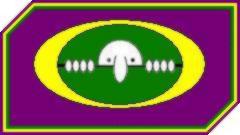
Today: Neither Moore nor Crowell are making big plays with the Lions, or any NFL team, for that matter. Davis is a serviceable #2 wideout, but is now riding the pine in New England. He's also a free agent right now.
2.12 Indianapolis Hoosier Daddies — PK Travis Dorsch

Today: Well, he did, but then he got hurt and lost the job to Neil Rackers, who then lost it to Shayne Graham (also due to an injury). Dorsch is out of the NFL, though he may be in NFL Europe.
2.13 Tennessee Taz Devils — TE Randy McMichael

Today: McMichael became the Dolphins' starting tight end, and is starting for Tennessee as well. A huge steal, and far more productive and Dorsch (2.12) and Andre Davis (2.11) combined.
2.14 Seattle Slewage — QB Kurt Kittner

Today: Didn't Kittner and Chapman both wind up in NFL Europe?
2.15 Denver Ranglers — WR Tim Carter

Today: Injuries have hampered Carter's career. Yes, Hilliard did leave town, but the Giants have since signed Plaxico Burress, and at present, the Giants' #3 WR position is a revolving door, with Carter, David Tyree and Jamaar Taylor taking turns in between trips to the hot tub to nurse their respective injuries.
2.16 Denver Ranglers — RB Josh Scobey

Today: While he was a handcuff pick, Scobey hasn't done much besides be a third-string running back.
3.01 Chicago Blaze — RB Adrian Peterson

Today: Peterson hasn't done much with the chances he has had with da Bears, and now he, too, is a third-stringer (behind Cedric Benson and Thomas Jones).
3.02 Minnesota Fats — RB "The Other" Ricky Williams

Today: "The other" Ricky Williams had a couple of starts with the Indianapolis Colts, but nowadays, when people mention that name, they're talking about the jabroni who destroyed the 2004 season for the Miami Dolphins and Indianapolis Hoosier Daddies.
3.03 Tampa Bay Meat Goats — QB Josh McCown

Today: McCown was a long-term project, and has had a few good games, but has never had very good job security. You're probably wondering where the hell the "green bananas" came from. Well, early in the 1989 NFL season, the Philadelphia Eagles had a kicker named Steve DeLine, who had already failed to make it with the San Francisco 49ers. After DeLine missed a couple of field goal tries, and someone asked him about his job security, DeLine said, "Well, I won't be buying any green bananas for a while." I'm sure that it was his way of saying, "I know I won't be with the Eagles for much longer." And the Eagles did cut him. And as it happens, the Meat Goats cut Lucas, and I picked him up, then later regretted it when, in Week 12 of 2002, he screwed up big time.
3.04 Pittsburgh BIG PAPAS — RB Chester Taylor

Today: Once again, I meant "handcuff." It was a perfect pick, now more than ever. Taylor's pass-receiving skills and speed provide a nice complement to Lewis (who I traded because I feared he couldn't go on much longer with two knee surgeries, citing the case of Natrone Means). The trade has pretty much been a colossal backfire for me, as the #1 pick turned out to be WR Bryant Johnson.
3.05 Oakland Ball Hogs — PK Jeff Chandler

Today: He did, but didn't have it for long, and was a "Rent-a-Kicker" type for a couple of years (most recently 2004 with Washington).
3.06 Cleveland Cosmos — TE Matt Schobel

Today: Not only did Schobel not become a viable fantasy tight end, but to make matters worse, Byron Chamberlain ceased to be one himself. Schobel is part of a committee in Cincinnati that includes Reginald Kelly and Tony Stewart. Hopefully for the Cellar Dwellers, Alex Smith (2005 Round 2) will fill the void, although they should have found a way to hold on to Chris Cooley (2004 Round 4).
3.07 Green Bay Ground Hogs — WR Cliff Russell

Today: I guess he couldn't hold on to the ball, because he's history. Geez, I thought the 2002 draft was deep at WR with Stallworth, Javon Walker, Jabar Gaffney, Reche Caldwell, Marquise Walker, Tim Carter, Ron Johnson (taken later in this draft) and Russell. Only Walker has turned out nicely, and I'm glad I didn't have a pressing need for a WR in 2002.
3.08 Chicago Blaze — TE Doug Jolley

Today: Jolley's been a rollercoaster. Late in 2002, it looked like I had finally found a replacement for Shannon Sharpe. Then the Oakland Raiders became the Dumbest Team in America and forgot how to use him, as head coach Bill Callahan became enamored with this Teyo Johnson guy and his successor, Norv Turner, decided to go with Courtney Anderson. Two years later, Jolley once again found a regular job with the New York Jets. In the meantime, I had already lucked into getting one of the top tight ends in the league (Jason Witten). Still, getting a solid backup tight end in the middle of Round 3 isn't too bad, provided Jolley doesn't lose playing time like he did earlier this year.
3.09 Dallas Junglehawgs — QB David Garrard

Today: Garrard is still a backup QB in Jacksonville, and some NFL scouts still think he could start. He's got tools, but hasn't been able to prove he can use them effectively.
3.10 Carolina Convicts — RB Omar Easy

Today: Uh, actually, the verdict came in a year or two ago. Guilty of non-production. Sentenced to 20 years of hard labor at McDonald's. NEXT!
3.11 Tennessee Taz Devils — RB Leonard Henry

Today: The highlight of his career came in 2004, when he was the subject of a free agent bidding war (no thanks, once again, to that hash-brained S.O.B.—NO, not "the other" guy). Lenny Henry—the British comedian/actor, that is—has since gone on to be the voice of that shrunken head in the Knight Bus in "Harry Potter and the Prisoner of Azkaban."
3.12 New Orleans Peeping Toms — TE Robert Royal

Today: Royal is still around, but has no fantasy value.
3.13 Cleveland Cosmos — WR Ron Johnson

Today: Thank goodness that at least I didn't waste 3.08 on him. I did waste 60 TUFFs on him, then later let go of Stokley (along with Justin Gage) in favor of Johnson. Damn Ron Johnson!
3.14 Arizona Outlaws — TE Chris Baker

Today: Baker was expected to replace Becht after 2004, but he didn't; otherwise, the Jets wouldn't have traded for Jolley in 2005. Then it looked like Baker might have beaten out Jolley to be the Jets' tight end, but now it looks like neither has claimed the job outright.
3.15 Denver Ranglers — QB Rohan Davey

Today: Davey's impact hasn't extended beyond too far Germany (as in NFL Europe). Brady and Davey wound up with the Tampa Bay Meat Goats.
3.16 New Orleans Peeping Toms — RB Najeh Davenport

Today: Davenport did replace Levens, and down the road, he still could replace Ahman Green. Just one problem: He broke his ankle during his first start of the season, so teams that were interested in him as a free agent after 2005 will have reservations about that ankle. In TUFF, New Orleans cut him, Denver picked him up, and then traded him to Green Bay.
4.01 Denver Ranglers — WR Deion Branch

Today: Who was Milburn? In 1998, the Detroit Lions threw a second-round pick to the Denver Broncos in exchange for this kick returner, when common sense clearly dictates that you can just as easily get a kick returner from the pool of undrafted free agents (e.g. Eddie Drummond for the Lions in recent years; Mike Nelms came to the Washington Redskins from the CFL in the early 1980s) or off the waiver wire (e.g. Desmond Howard for the Lions several years back). The Lions had this delusion, too, that Milburn could be a receiver. He was not. Branch, however, has become one of the top wideouts in New England.
4.02 Minnesota Fats — TE John Owens

Today: Well, most fourth-rounders are shots in the dark. Owens didn't take much advantage of his job opportunity.
4.03 Tampa Bay Meat Goats — PK Hayden Epstein

Today: Neither Epstein nor Bill Gramatica are kicking in the NFL.
4.04 Pittsburgh BIG PAPAS — WR Kahlil Hill

Today: Hill didn't do much at all. 2005 saw him in a couple of different training camps, but for all intents and purposes, he's better off trying out for the CFL or the Arena Football League.
4.05 Oakland Ball Hogs — RB Verron Haynes

Today: Haynes was cut, then I picked him up, and then after putting up with so many of his injuries, I let him go too. He had a chance to step up this year when Bettis and Duce Staley got hurt, but wouldn't you know it, he got hurt again.
4.06 Cleveland Cosmos — RB Woodrow Dantzler

Today: I forgot to mention that Coleman's pro football career ended with an ACL tear in 1998. In any case, Dantzler has made about the same impact as Coleman did. In other words, none at all.
4.07 Green Bay Ground Hogs — RB Eric McCoo

Today: Maybe his stats declined in spite of his O-line, not because of it.
4.08 Oakland Ball Hogs — WR Eric Crouch

Today: He tried resurrect his career as a safety. He is NOT coming to a dynasty league near you, unless it's one where you can only pick from NFL Europe players AND individual defensive players are used.
4.09 Chicago Blaze — RB Jarrod Baxter

Today: Kel Miper called this a wasted pick, and Baxter did nothing to prove him wrong. He scored all of 7 points in the 2002 season, and hasn't scored a point since. Still, I couldn't believe that the Texans couldn't give him a try as the every-down back when James Allen and Jonathan Wells didn't accomplish much.
4.10 Carolina Convicts — TE Justin Peelle

Today: Late in 2003, this undrafted college basketball player, Antonio Gates, got the action after Alexander left. Peelle had a chance to get some action when Gates held out, but Gates is back and Peelle is on the bench again.
4.11 Tennessee Taz Devils — WR Javin Hunter

Today: OK, here's a forecast I got right!
4.12 Denver Ranglers — RB Damien Anderson

Today: Well, Marcel Shipp was the Cardinal running back that did step up. (Thomas Jones was, at the time, a bust, and both Josh Scobey and Anderson have failed to amount to more than third-string material.)
4.13 Cleveland Cosmos — TE Keith Heinrich

Today: Heinrich didn't shine enough to prevent the Panthers from turning to Kris Mangum, and more recently, Michael Gaines. Sanders, who I thought could emerge as the starting tight end in Cleveland, didn't do that.
4.14 Arizona Outlaws — QB Randy Fasani

Today: Favre's age wasn't as big an issue as I had expected. I wasn't crazy about the Cowboys' QBs at the time (Quincy Carter was one; I don't remember who the other one was). Fasani is history.
4.15 Dallas Junglehawgs — RB Tellis Redmon

Today: He didn't beat out Taylor, he didn't beat out Musa Smith, and I believe he's now in NFL Europe.
4.16 Dallas Junglehawgs — RB Antwoine Womack

Today: Project players only have so much time to make an impact. Womack's time ran out around 2004.